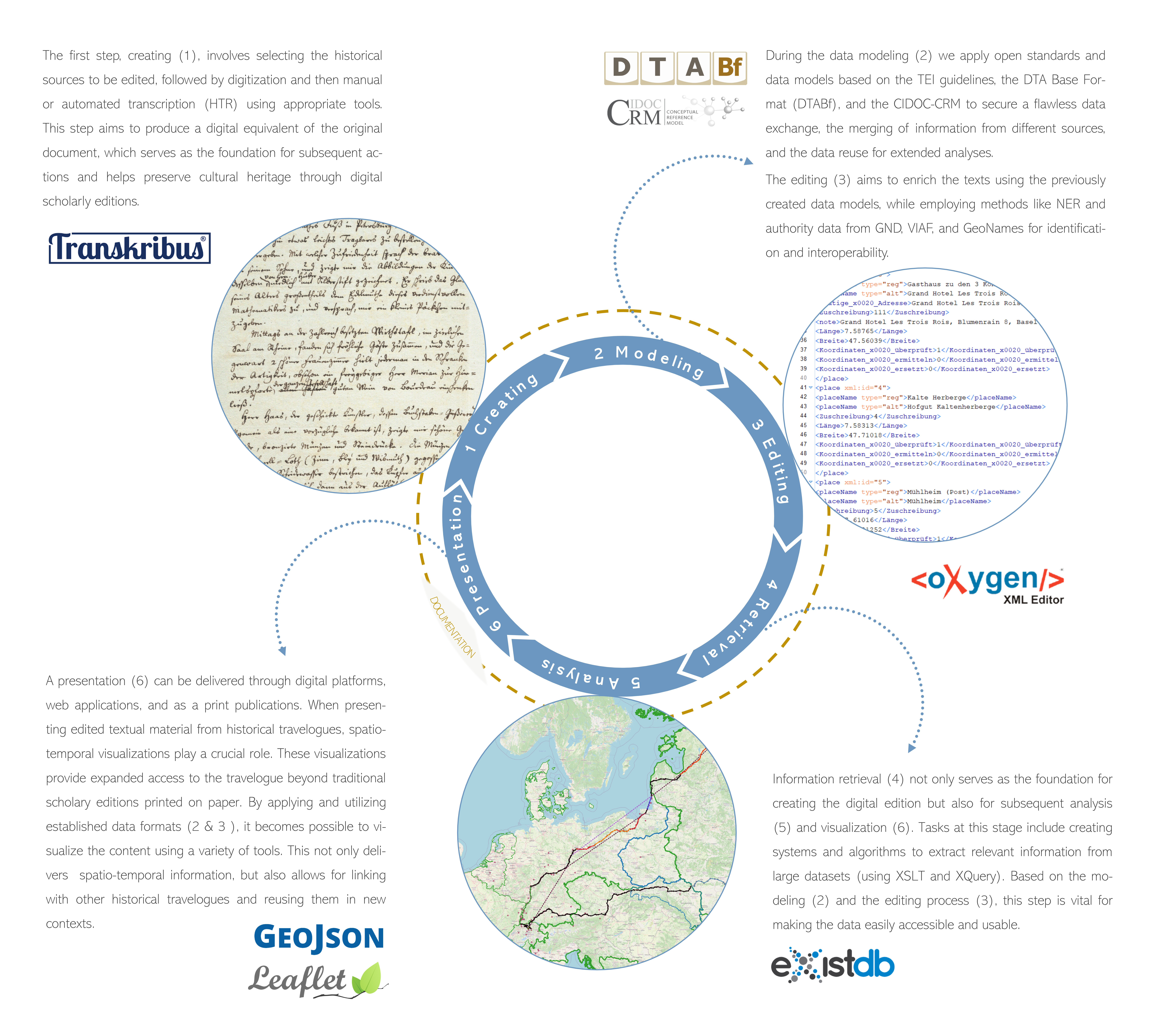2. Six-Step Lifecycle of Digital Editing
The circular workflow starts with the digitization and transcription (1) of the texts to be edited, followed by the modeling and annotation (2 & 3) of data contained in the text. The processed data provides answers to complex information queries (4) and enables their analysis (5). Visualization (6) creates a new access to the texts, opening different perspectives. New research questions can trigger another iteration of the lifecycle. (Fig. 1)

Step 1: Creating
Creating includes the digitization and transcription of historical sources. It begins with the selection of documents to be digitized, followed by digitization and subsequent manual transcription or automated text recognition using appropriate tools. The goal of this step is to create a digital copy of the original, which forms the basis for the following steps and supports the preservation of cultural heritage. 1
Step 2: Modeling
During the step of data modeling, the digitized document is structured and enriched. It includes defining relationships between data, categorizing information, and creating schemas. We use a data model based on the TEI guidelines (TEI 2019) and the DTA Base Format (DTABf) (Haaf et al. 2014). These open standards allow lossless data exchange, the merging of information from different sources, and the reuse of data for extended analyses. For ontological modeling, we apply CIDOC-CRM. 2
Step 3: Editing
The editing step enriches the texts using the previously created data models. The digitized texts are corrected, annotated, and provided with metadata. Methods like NER and ontological annotation are employed. The dates were semi-automatically annotated with existing software modified to suit the specifics of the case study (Möhrke 2023). 3 Additional information is outsourced to registers. 4
Step 4: Information Retrieval
This step involves developing systems and algorithms to retrieve relevant information from large data sets. In our case study XSLT and XQuery are primarily used. This step is crucial for the accessibility and usability of the data.
Step 5: Analysis
In the analysis step, digitized and edited data are examined to extract insights. This can encompass various types of data analysis, including textual, network, spatiotemporal, or statistical evaluation. The goal is to identify patterns, trends, or relationships within the data, potentially leading to new research questions that restart the lifecycle. 5
Step 6: Presentation
This step involves presenting and disseminating the results by publishing digital editions, creating visualizations, or developing user interfaces for databases. Modeling in established formats allows visualization in various tools and linking with other digital editions. Presentation can be delivered through digital platforms, web applications, or traditional print publications.